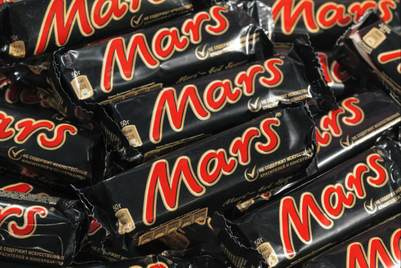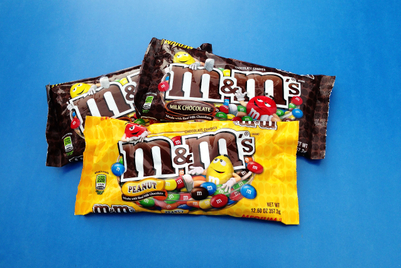
Likewise, more than half of Japan’s dog and cats are older than seven years, and roughly 30 per cent are past the 10-year mark.
Here the mimicry ends, however. While the number of Japanese began dwindling in the mid-naughts, the number of pets has swollen. Last year, Japan had 13.6 million dogs and 11.3 million cats, a nine and 29 per cent increase respectively on 2004, according to the Japan Pet Food Association.
“No single element drives the pet market in Japan,” says Phillip Rubel, representative director, CEO, Saatchis Fallon Tokyo. “Rather it is a ‘perfect storm’ of several elements coming together. High disposable income means people can afford a pet and all of the food, toys, clothes and healthcare that comes with it. Retired people have pensions and savings, while the young are marrying later and having fewer kids. Pets fill a need in their lives.”
Supporting these furry companions, according to the Yano Research Institute, is a US$12.7 billion complex of breeders, veterinarians, manufacturers of everyday pet food and accessories, as well as purveyors of exotic cradle-to-grave accoutrements.
The majority of these businesses are local and small, and use little national advertising. The exception is pet food manufacturers, and that is where the brands battle, though ATL advertising has waned this past decade.
Last year, Master Foods Japan, the subsidiary of world’s largest pet food supplier, Mars, and owner of the Pedigree, Kal Kan and other brands, spent a measly $6.77 million on mass media - one-tenth of what it spent a decade earlier, according to in-house data from McCann Erickson Japan.
Ranked by 10-year totals (2000-2009), the top five pet food advertisers were Mars ($345.2 million), iams ($106.2 million), Unicharm ($100.7 million), Nestle Purina Petcare ($66.3 million) and DoggyMan ($63.1 million). However, last year, Unicharm was the big spender ($10.9 million), followed by DoggyMan ($8.1 million), Master Foods ($6.8 million), Nestle Purina ($5.8 million) and iams Japan with a stunning zero. True, Japan is in the midst of a severe advertising recession, but the decline in pet food advertising began with the March 2004 recall across Asia of Pedigree dog food made for Mars in Thailand.
“Pedigree was the number one brand for cheap dog food. After the recall, the consumer psychology changed,” says Ichiro Hata, group account director, McCann Erickson Osaka “Makers of mid-quality pet food, traditionally the big spenders, cut back on advertising. Sales of pet food shifted toward the premium and low ends.”
Despite the recall, Pedigree retained its sales lead. Euromonitor ranked its 2008 share of market at 9.8 per cent, but yapping at its heels were Hill’s Science Diet (6.2 per cent) and Nisshin (6.0 per cent), followed by Friskies and Kal Kan.
Japan’s canine and feline populations consumed 8,834,000 megatonnes of pet food valued at $4.5 billion last year. Interestingly, price hikes allowed sales value to grow faster than sales volume, reports Euromonitor.
Equally curious, however, is the fact that sales volume is growing more slowly than the pet population, an apparent contradiction made possible by dogs getting smaller. Today two-thirds are under 10 kilograms, and 14.1 per cent under three kilograms. Japan’s canine population is also witnessing a generation gap. Few pedigreed toy pups have ever tasted table scraps. Older, larger dogs still recall leftover rice with miso, though they too are now being fed commercial pet food claiming to be specially formulated for age, gender, size, health and lifestyle. The safety of commercial pet foods in Japan is top of mind. In response to a 2007 case of pet poisonings in the US from melamine-tainted pet food made in China, Japan passed a Pet Food Safety Law in June 2008.
Industry comment
 Blair Currie, regional business development director, Aegis Media:
Blair Currie, regional business development director, Aegis Media:“In rural Japan, cats still catch mice and dogs still guard the house or maybe even chase the postman. But in urban areas, cats and dogs - cute little ones in particular - have nearly taken on human social roles. Pets are companions for young singles. For empty-nest married couples, they can be a substitute for children. So it is no surprise they lead a pampered existence, and an enormous industry has arisen to cater to their needs.
Even luxury brands have reached out to Japanese pets. Burberry provides canine trench coats and Hermes offers carry bags. In Tokyo parks, designer breeds promenade in strollers wearing outfits complete with fancy collars, sunglasses, coats, kimonos and photo IDs. Vending machines nearby sell branded canine bottled waters.
Pet ownership is so pervasive that it is a consideration in the design of other products. Car makers - Honda, for example - offers pet friendly options in its vehicles.
Then comes pet specialty businesses. For doting pet owners, there are timed-release food dispensers so their pet never misses a meal. There are ringtones from DoCoMo that only dogs can hear. A device Bowlingual, claims to translate barks to human speech. Near Kyoto, there is a all-dog themed park, Bow Wow Kingdom. At Narita Airport, Pet Inn Royal, includes cats, dogs, rabbits, ferrets, and hamsters among its guests.
Marketing to pets is cradle to grave. For the young, there are dog runs and dance classes, not to mention beauty salons and restaurants, and for the old, there are spas and acupuncture, nursing homes and finally funerals and crematoriums.”
This article was originally published in the 25 February 2010 issue of Media.
Got a view?
Email [email protected]


.jpg&h=334&w=500&q=100&v=20250320&c=1)



.png&h=334&w=500&q=100&v=20250320&c=1)

.png&h=334&w=500&q=100&v=20250320&c=1)

.png&h=334&w=500&q=100&v=20250320&c=1)








.jpg&h=268&w=401&q=100&v=20250320&c=1)